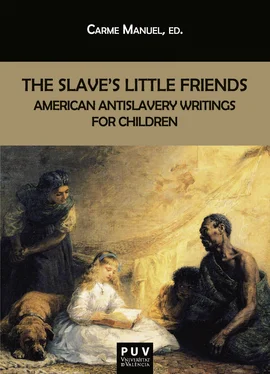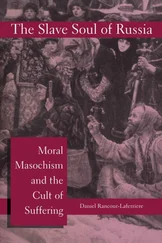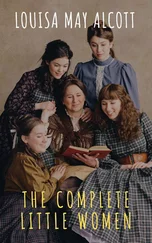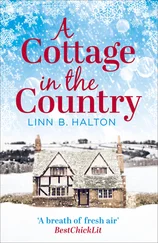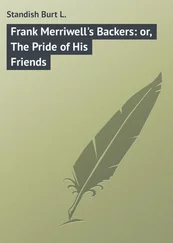In 1848, Jane Elizabeth Jones, a reputed antislavery speaker who worked under the auspices of the Boston Anti-Slavery Office, with William Lloyd Garrison and other well-known abolitionists, published THE YOUNG ABOLITIONISTS; OR CONVERSATIONS ON SLAVERY. According to Susan E. J. Landwer, Jones was “an iconoclast in her era but has yet to be recovered in new archaeologies of woman’s rights history and historical assumptions of the 19th century fight for universal rights” (39). This scholar criticizes the fact that when twenty-first-century historians of abolitionism have determined that the most prominent activists fighting for universal rights were Garrisonian abolitionists, they have left out Jones, “one of their biggest advocates and speakers,” a woman who “prefigured contemporary criticism of ‘founding fathers’ and the pretensions of the North during the Civil War period by pointing out their hypocrisy decades before our ‘official’ history was revised” (47-48).
Together with her husband, Benjamin Smith Jones, Jones reorganized the Ohio Anti-Slavery Society into the Western Anti-Slavery Society, and they both became editors of the Salem newspaper The Anti-Slavery Bugle , from 1846 to 1849, a publication heavily influenced by Garrison’s radical abolitionist doctrines, and to which she contributed with articles. Salem was a city in northern Columbiana County, a location with a long history of abolitionism for it had a predominantly Quaker population and was also an active Underground Railroad station. The newspaper’s motto displayed on the front page was “No Union with Slaveholders,” which aligned The Anti-Slavery Bugle with Wendell Phillips’s and William Lloyd Garrison’s radical ideology of the time. As explained by the Ohio Historical Society, “in its first issue the Bugle declared: ‘Our mission is a great and glorious one. It is to preach deliverance to the captive, and the opening of the prison door to them that are bound; to hasten in the day when ‘liberty shall be proclaimed throughout all the land, unto all inhabitants thereof.’ To that end, the paper and the society supported women’s rights and criticized churches that neglected the antislavery cause.” The Anti-Slavery Bugle “printed letters and speeches, including Sojourner Truth’s 1851 ‘Ain’t I a Woman’ speech, along with calls-for-meetings and editorials that supported its goals,” and it “was also involved in the peace movement, opposing the American government’s involvement in the Mexican War.”
Jones was also the author of many editorials defending abolitionism and women’s suffrage. She became Abby Kelley’s companion in these struggles as well as a participant at the Ohio Woman Suffrage Convention in 1850. As Landwer explains, Jones was “such a prominent human activist that she was asked to defend the woman suffrage cause in the (Ohio) Senate chamber, before their joint Committee and such of the General Assembly and of the public, as might choose to come and listen” (39). During the year 1850 Jones focused on women’s rights and participated in a number of national conventions. Her speech ‘The Wrongs of Woman,’ delivered before the Ohio Women’s Convention in Salem on April 19, 1850, starts: “There is not, perhaps, in the wide field of reform, any one subject so difficult to discuss as that of Woman’s Rights. I use the term ‘Woman’s Rights,’ because it is a technical phrase. I like not the expression. It is not Woman’s Rights of which I design to speak, but of Woman’s Wrongs . I shall claim nothing for ourselves because of our sex—I shall demand the recognition of no rights on the ground of our womanhood. In the contest which is now being waged in behalf of the enslaved colored man in this land, I have yet to hear the first word in favor of his rights as a colored man; the great point which is sought to be established is this, that the colored. man is a human being, and as such, entitled to the free exercise of all the rights which belong to humanity. And we should demand our recognition as equal members of the human family; as persons to whom pertain all the rights which grow out of our relations to God, and to each other, as human beings; and when this point is once established, the term ‘Woman’s Rights’ will become obsolete, for none will entertain the idea that the rights of women differ from the rights of men. It is then human rights for which we contend” (52).
The Young Abolitionists; or Conversations on Slavery presents a series of conversations between a mother, Mrs. Selden, and her three children to fiercely attack the passivity of the American government towards the continuation of slavery, blame the North for being an accomplice to the South, and describe many of the consequences and facts of slavery. The imperative that runs through the text is to convince its young readers to become abolitionists and active agents in setting examples of moral conduct. The lessons imparted in these dialogues understate the fact that the American family is the place to instill antislavery doctrines. Parental example must precede moral instruction, as shown by the fact that the Seldens hide a group of runaway slaves. Deborah De Rosa notes that “Mrs. Selden’s escalating denunciation includes explaining the differences between plantation and house servants; documenting the physical and emotional abuse slaves endure from both male and female slave owners; exposing forefathers like George Washington who owned slaves; (and) condemning Northerners who openly support slavery or those who perpetuate it by not speaking against it” (2005: 102).
The Young Abolitionist was reviewed twice in The North Star , Frederick Douglass’s antislavery newspaper. The first recommendation was by Douglass and it appeared in the issue of December 8, 1848: “This is the title of a neat little volume by Mrs. Jane Elizabeth Jones, of Salem, Ohio. It is well written and nicely adapted to the wants of the rising generation. Mrs. Jones has done the cause of the slave a great service, by turning her attention to this department of antislavery effort. In our impatience to see the result of our labors, in the destruction of slavery, we have hitherto devoted little time to impressing the young with antislavery sentiments and principles. The wisdom of this course may be fairly doubted. We have reason to believe that to the young of this day the slave and this country are to be indebted for emancipation. The sale of this admirable book ought to be immense.” The second review—written on November 12, 1848, but published on Friday January 19, 1849—was penned by Henry C. Wright, a defender of militant abolitionism and “‘the children’s agent’ of the American Anti-Slavery Society” (Alonso 100), who highlighted the strength and courage of Jones in flattering terms: “Dear Friends, Before me is a work entitled The Young Abolitionists, or, Conversations on Slavery ; by J. Elizabeth Jones. It is just from the Anti-Slavery press of Boston. I have read this little book with great profit and satisfaction. The principles, practices and spirit of American Slavery are brought out in it clearly and distinctly, and to the comprehension of the class of readers for whose benefit it was designed. It was written for children; and the child who begins to read it will not be likely to lay it aside till it is read through. It is in the form of Dialogue, and the conversation is carried on with spirit and animation. The author has contrived to impart instruction to children on the most radical and only true principles of Anti-Slavery. I see not how any child can read that book or hear it read, and not receive lasting benefit. The writer has done a good work for Anti-Slavery. She has struck a blow for Freedom in the right place. If the children of Ohio could get at that book, and read it, and imbibe its spirit, it would matter but little what constitutions or laws were made to uphold the system of fraud and violence. Slavery would be dead in the State, and nothing could keep it alive. One effort made with children, tells more powerfully against slavery than ten made with adults. Children are born abolitionists; this work is designed to keep them so, and to prevent them from imbibing the spirit of violence and oppression that is so rife around them in this land of boasted liberty. The facts and illustrations embodied in The Young Abolitionist s are pertinent and forcible, and peculiarly fitted to make a deep and abiding impression on the hearts of children in favor of human liberty. It would greatly benefit the righteous cause of Anti-Slavery, and help to hasten the day of the slave’s redemption, if the Abolitionists of this State and of the country would take measures to get that book into general circulation.” As with other abolitionist texts for children, reviewers praised Jones’s most needed efforts to contribute to the crusade against slavery by educating American children from their infancy to confront patriotically the wrongs of their country.
Читать дальше
